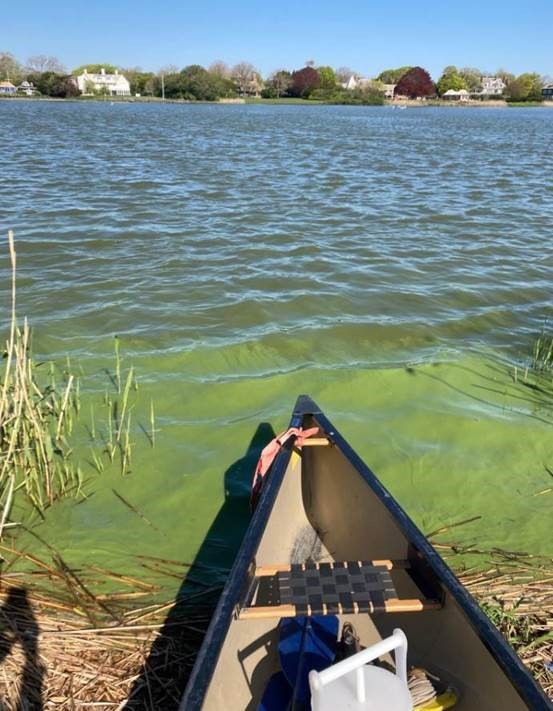MakingWaves - 2023 Draft IUPs; Updated Lake George HABs Plan; Lake George Infrastructure Project; HRE 2021 Report; HABs Notifications; Animals and HABs
The New York State Department of Environmental Conservation sent this bulletin on 08/26/2022 12:58 PM EDT |
| DEC Delivers - Information to keep you connected and informed from the NYS Department of Environmental Conservation |
| Share or view as a web page || Update preferences or unsubscribe |
MakingWaves - News From The Division of Water |
In This Issue:
CWSRF and DWSRF Draft Intended Use Plans for Federal Fiscal Year 2023The New York State Environmental Facilities Corporation (EFC), Department of Health (DOH) and DEC have announced the availability of the Draft Federal Fiscal Year (FFY) 2023 Intended Use Plans (IUPs) for the Clean Water State Revolving Fund (CWSRF) and the Drinking Water State Revolving Fund (DWSRF). The CWSRF and DWSRF programs are available to municipalities and certain non-municipal entities in New York State to finance water quality and drinking water-related projects. The Draft IUPs include lists of projects that could receive financing from October 1, 2022, to September 30, 2023. Find the Draft CWSRF FFY 2023 IUP on EFC's website and the Draft DWSRF FFY 2023 IUP on DOH's website. Written comments must be submitted by 5 p.m. Thursday, September 22. View the August 17th Environmental Notice Bulletin for more information. EFC and DOH will host a webinar to review the Draft 2023 IUPs at 11:30 a.m. on Monday, September 12. Advanced registration is required. Updated Lake George Harmful Algal Bloom Action PlanDEC has released the updated Lake George Harmful Algal Bloom Action Plan (PDF). Lake George was selected as one of 12 priority waterbodies to receive a Harmful Algal Bloom (HAB) Action Plan in 2018. The HABs Action Plan for Lake George was updated in 2022 by DEC and the Lake George Park Commission to include: an updated summary of water quality conditions; a more accurate land cover analysis and estimation of the sources of phosphorus from the watershed; and a revised list of management actions that can be taken at both the local and state level to help reduce the occurrence of HABs. More information on HABs can be found on DEC’s Harmful Algal Bloom webpage. Completion of Critical Infrastructure Project to Improve Lake George Water Quality
Governor Kathy Hochul has announced the completion of a multi-year project to repair and upgrade critical water infrastructure on Lake George. New York State invested nearly $15 million in the state-of-the-art improvements to the village of Lake George's wastewater treatment plant that will significantly reduce the amount of pollution that enters the lake and create lasting environmental and economic benefits for the region. The village began construction of the plant upgrades in 2019, and they were completed this month.
Hudson River Estuary Program Coordinator's ReportDEC has announced the availability of the 2021 Hudson River Estuary Program Coordinator's Report (PDF). The report highlights the actions DEC's Hudson River Estuary Program and its partners are taking to help protect, restore and improve the Hudson and benefit the people and communities that depend on this resource. Harmful Algal Bloom (HAB) Notifications
Visit NYHABS, DEC’s harmful algal bloom notification map, to view locations of freshwater HABs in New York State that were reported in the past two weeks. Click on a dot for more information, including the date it was reported, the waterbody name, and pictures. Click on the arrow at the bottom of the screen to view a list of reported HABs. Know it. Avoid it. Report it. If you see a HAB, please use the reporting form to submit a report to NYHABS. Because waterbodies may have HABs that have not been reported to DEC, avoid contact with floating mats, scums and discolored water. If you, your family, or pet have been in contact with a HAB, please rinse with clean water and report any symptoms to the Department of Health at harmfulalgae@health.ny.gov or contact your local health department. Consider visiting a healthcare provider if you, your family, or your animals are experiencing symptoms related to blue-green harmful algal blooms. Symptoms include diarrhea, nausea, or vomiting; skin, eye, or throat irritation; and allergic reactions or breathing difficulties. Animals and Harmful Algal Blooms (HABs)Keep animals, your pets or livestock, out of any surface scums or heavily discolored water, or rinse them with clean water if they are exposed to blooms. HABs can stick to and become concentrated on animal fur, creating a health risk when the animal grooms itself. This is particularly important because HABs may release a fast-acting nerve toxin that can be dangerous for pets, especially dogs that swim in blooms. Seek veterinary assistance if your pet shows any signs of distress after exposure to a bloom. These signs include:
If you see or suspect any of these symptoms, particularly within 30 minutes to a few hours after exposure to an algal bloom, seek immediate veterinary care. For more information, visit DEC's Information about Harmful Algal Blooms webpage. |


